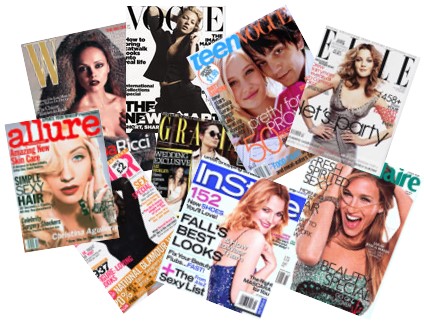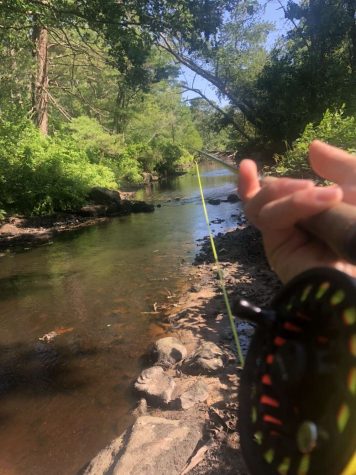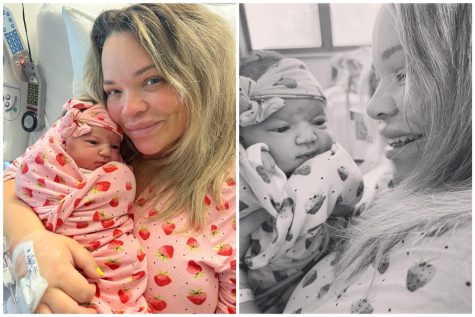Don’t trust everything you read

While skimming through some of my old teen magazines from middle school the other day, I remembered how unique some of the material in those magazines was. It wasn’t until I noticed a page titled, “The Guy Guide,” that I started to look a bit closer.
This page was filled with all kinds of advice for girls on how to handle their hardcore middle school crushes: destination date, party ideas, and even advice on how to tell if he likes you as “more than a friend.”
After laughing at how blunt and creative this “Guy Guide” was, I wondered if magazines today still advertised such ridiculousness.
Sure enough, in any female-oriented magazine today, you can always count on finding a section on love and dating advice. Cosmopolitan, Seventeen, and J-14 were some of the teen magazines that included the most absurd information. They even advertised the information on their covers too – some with big pink and blue bubble letters reading, “Boy Trouble!”
However, the most troubling part about these love and dating advice sections doesn’t seem to be the boys. It seems to be that the magazine editors are providing such potentially provocative information to a large crowd of middle schoolers.
Upon approaching the stages of puberty throughout middle school and even early high school, young teen girls are faced with feelings that are difficult to explain and determine. Of course, not every single preteen feels lost and confused; however, when you are struggling with those feelings of vulnerability, it can make it hard to feel like you fit in anywhere.
These colorful, eye-catching magazines are plastered with neon fonts and catchy phrases that always seem to answer every question you have on your mind as a young teen. They give teens a false hope that they have the power to unlock the hidden secrets of the male brain, leading us to put far too much trust in the less-than-realistic advice they give.
Seventeen magazine provides a “Hot Guy Panel” in each issue depicting charming, charismatic-looking young men between the ages of 15 and 21 stating facts about themselves. One “hot guy,” Winston, age 21, confessed that the “move he can’t resist” was, “One time a girl [he’d] been flirting with at school came up to [him] and said, ‘We’re hanging out on Friday.’” Winston elaborated on how that kind of confidence totally won him over.
It’s understandable that guys find confidence attractive, but in this situation, Winston makes it seem as if a girl walking up to a guy and telling him what to do is something ultra-desirable. In reality, it would probably be incredibly unlikely to come across a situation like that in which the guy didn’t think the girl was weird or creepy.
Cosmopolitan provides a section called “Manthropology – Your Guide to the Male Brain.” Cosmopolitan is a magazine targeted towards young adults and older teens, so their advice is slightly more relatable and less exaggerated. Nonetheless, one issue explained how to decode male eye language. It talked about how looking up and to the left means that “he’s being honest,” while looking up and to the right means, “he’s gearing up to spit some B.S.”
Many women will seriously take this information into account when on a first date with a guy. It’s unfortunate how heavily they rely on the advice and thoughts of others in order to form their own opinions about other people. Instead of enjoying yourself on a date, it forces you to be concerned with whether he looked in the corner of the room because he got distracted, or if he’s lying to you.
Above all, J-14 seemed to have the most surprising and alarming information of all. After reading “The Guy Guide” in this preteen magazine, I learned how to decipher all sorts of things about boys just by knowing what his favorite dessert is. J-14 stated that if a guy eats ice cream, “Brain freezes obviously don’t bother him. If he usually eats this cold treat, he’s a total tough guy!” and if he prefers cookies, “Once you have one cookie, you can’t stop! He’s impulsive and lives in the moment.”
I never thought I could learn so much about a boy just by noticing that he eats Oreos. This is a magazine meant for preteen girls. At an early age, magazines are already molding the minds of these girls and forming their opinions for them with these tips. Now when these young girls talk to boys, they won’t be thinking about just having a nice conversation. They’ll be too focused on what it means when he texts you first, when he’s eating cake, or even what the style of his eyebrows are saying about him.
“Magazines give the wrong impression on something that isn’t very realistic or logical,” said junior Alyssa Giovannini. “Young girls digest it and believe it to be the truth when in the end it isn’t that at all.”
Boys themselves don’t even agree that this information about themselves is true. “I don’t think a personality and someone’s taste have anything to do with each other,” said senior Logan Crane.
Junior Cooper Smith agreed, “Girls should know that a lot of that information is false.”
The comparisons that are made are sometimes so hysterical that it’s practically debatable whether or not it’s meant to be taken seriously. It’s absurd the material these magazine writers can produce and get away with just because they’re writing for such adolescent magazines. The audience doesn’t know any better.
I understand that these magazines are attempting to be “relatable” and are trying to console teen girls who may be going through stressful hormonal times. However, they are essentially making that experience worse for them.
We need to be aware that these magazine corporations have one thing in mind – to make money off us. No matter what “advice” they give us, we are still just their customers, buying and reading their magazines month after month.
Keep in mind what the companies have in mind. Think twice before you end a date because of his messed eyebrows. Take that advice with a grain of salt and be sure to look at the big picture. Like a guy for who he is, not for his particular flavor of cupcakes.






